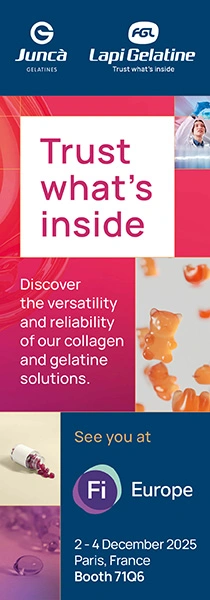Symrise Analyzes Anthocyanin Content of Bilberries with New Method
Improved information on bioactive ingredients, enables optimally standardized extracts. Increased sustainability with fast, eco-friendly analysis method.

24 Sep 2012 --- Symrise has developed a procedure for analyzing the health-promoting ingredients in wild bilberries (Vaccinium myrtillus). The process allows individual anthocyanins to be more quickly and precisely identified. Additionally, the efficient and environmentally friendly analysis method guarantees that product quality remains consistently high.
Certain natural substances are important for our health thanks to their antioxidant properties. These substances include anthocyanins, secondary ingredients that are found in plants, including wild bilberries (Vaccinium myrtillus). Different plants create these compounds in different ways. To identify and classify the anthocyanins, which consists of analyzing their quality and authenticity, various chromatographic methods are used, such as HPLC (high-performance liquid chromatography).
The Research segment at Symrise and the Consumer Health business unit are constantly researching these natural substances and their impacts on health. To do this, Symrise researchers further refined the standard method outlined in the European Pharmacopoeia. The new technology is incredibly sensitive and delivers high-resolution, accurate data – reliably detecting biofunctional ingredients. With the new HPLC method, Symrise has succeeded in substantially increasing the efficiency of the analysis process that identifies biofunctional ingredients in wild bilberries while also improving environmental compatibility. The quality of extracts, such as those from the bilberry, can also be checked more thoroughly with this method and can even be optimized and improved.
The method separates and quantifies the anthocyanins three times faster than conventional methods. This reduces energy costs as well as the volume of solvents used by a third. All the solvents are also biodegradable, which eliminates disposal costs. Additionally, the new method of analysis enables researchers to precisely determine the content and distribution of anthocyanins as well as their individual composition using conventional analysis equipment.
Symrise researchers recently wrote a scientific article on the HPLC method and submitted it to a scientific journal in order to present the new method to other interested parties in the industry.
Dr. Simone Peschke, Technical Director Global Business Unit Sweet and co-initiator of the project, has this to say about the new analytical process: “The excellent cooperation between everyone involved in the project was the key to developing this new analysis method so quickly. The new process is already available for quality control applications. This allows us to benefit from all of the advantages the new HPLC method has to offer. This is just further evidence that Symrise is more than capable of developing and implementing new methods.”
Dr. Melanie Stuertz, Manager Product Characterization at Symrise, adds: “With this new method, we are bringing our sustainability focus into the laboratory. At the same time, we are accelerating our analytical processes in quality control. This provides our customers with added value in numerous ways: The new method uses the newest technology and delivers precise analytical results in significantly less time than before. This in turn saves on costs and helps preserve the environment. We are also very pleased to have our method published in a scientific journal.”
A production site in Hamburg produces the bilberry extract. The site is already benefiting from the new analytical method: “Our customers place great value on carefully produced and high-quality products. The new analytical method optimizes our quality control processes in a significant way. From an environmental perspective, the method is in line with our commitment to sustainability and shows how serious Symrise is about the subject,” explains Dr. Hillers, head of the Hamburg plant.
Particularly noteworthy is the fact that the ingredients in bilberries, the so-called anthocyanins, have long been identified as antioxidants. There are up to 15 different anthocyanins present in bilberries. These can be concentrated using extraction processes. Symrise standardizes its extract from the bilberry, which is known by the product name Actiplants Bilberry, at 36% anthocyanins and 25% anthocyanidins.















